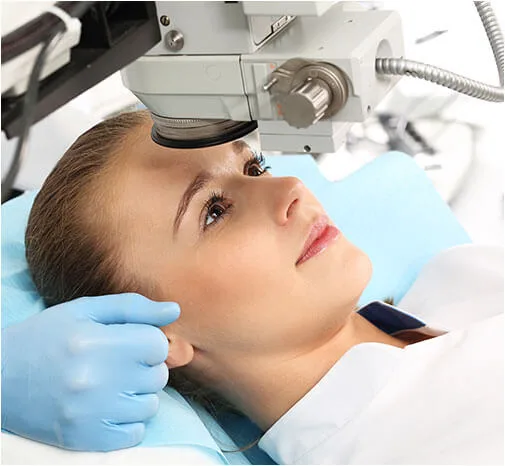Retinopathy of Prematurity

Retinopathy of Prematurity (ROP)
Retinopathy of prematurity (ROP) affects babies born prematurely or at a low birth weight. Typically, premature babies are born before the blood supply to their retina is fully developed. (The retina senses light and sends images to the brain.) As their eyes grow new blood vessels, these vessels bleed and grow into parts of the eye where they don’t belong. This causes scar tissue inside the eyes. Without treatment, these infants can experience retinal detachment, loss of vision and eventually, blindness.
New-borns with ROP only develop symptoms after the disease has become severe or progressed to retinal detachment. That’s why early eye exams are important to protecting your new-born’s vision. Babies with this condition need lifelong follow-up, even if they didn’t require treatment.
When Should You Take Your Baby to a Doctor?
Babies born at 28 weeks or earlier or weighing less than three pounds, five ounces at birth are at risk for this disease. To prevent vision loss, have your baby examined by an eye doctor four to six weeks after birth.
As one of the only eye centres in the country with ophthalmologists specializing in paediatric eye health, Bascom Palmer Eye Institute, part of the University of Miami Health System, has the expertise to treat retinopathy of prematurity. Our ophthalmologists examine premature infants during and after their time in the neonatal intensive care unit (NICU) to protect their eyesight.
Tests
Comprehensive Screening Exam – A complete eye exam, done four to six weeks after birth, is the best way to protect your baby’s sight. To ensure timely diagnosis, our paediatric eye doctors examine your new-born during and after their time in the neonatal intensive care unit (NICU).
Optical Coherence Tomography (OCT) – This imaging test creates a cross-sectional, three-dimensional (3-D) view of the inside of your baby’s eyes.
Ultrasound – This safe, painless test uses high-frequency sound waves to produce detailed images of your baby’s eyes and allows the physician to examine the eye socket.
Treatments
Laser Therapy – To protect your baby’s eyesight, your doctor may perform laser therapy to prevent the rapid growth of abnormal blood vessels.
Injections – Another method of treating this disease is injecting medicine into the eye to prevent abnormal blood vessels from forming. Before treatment, the eye care professional puts numbing drops into the infant’s eyes.


